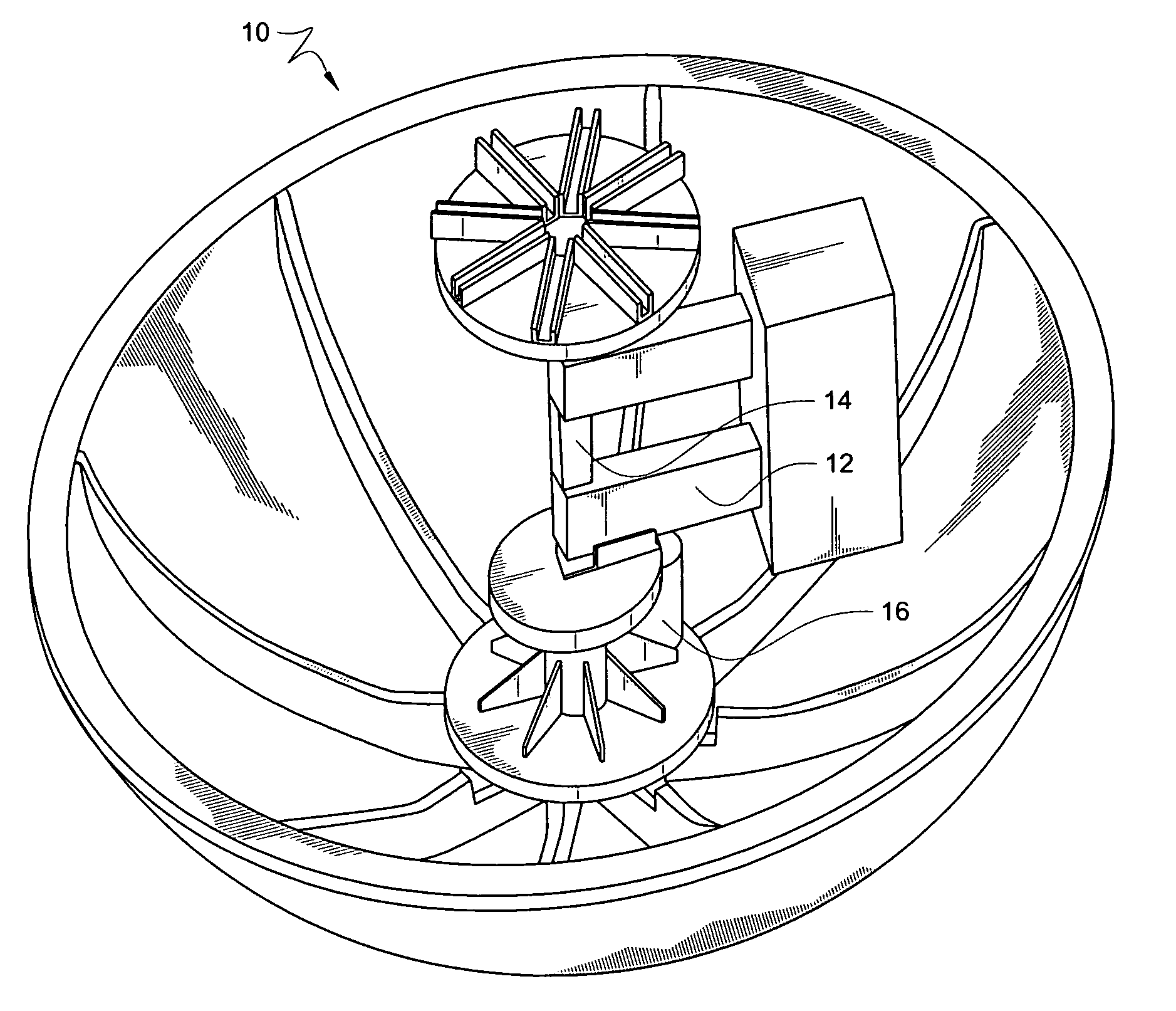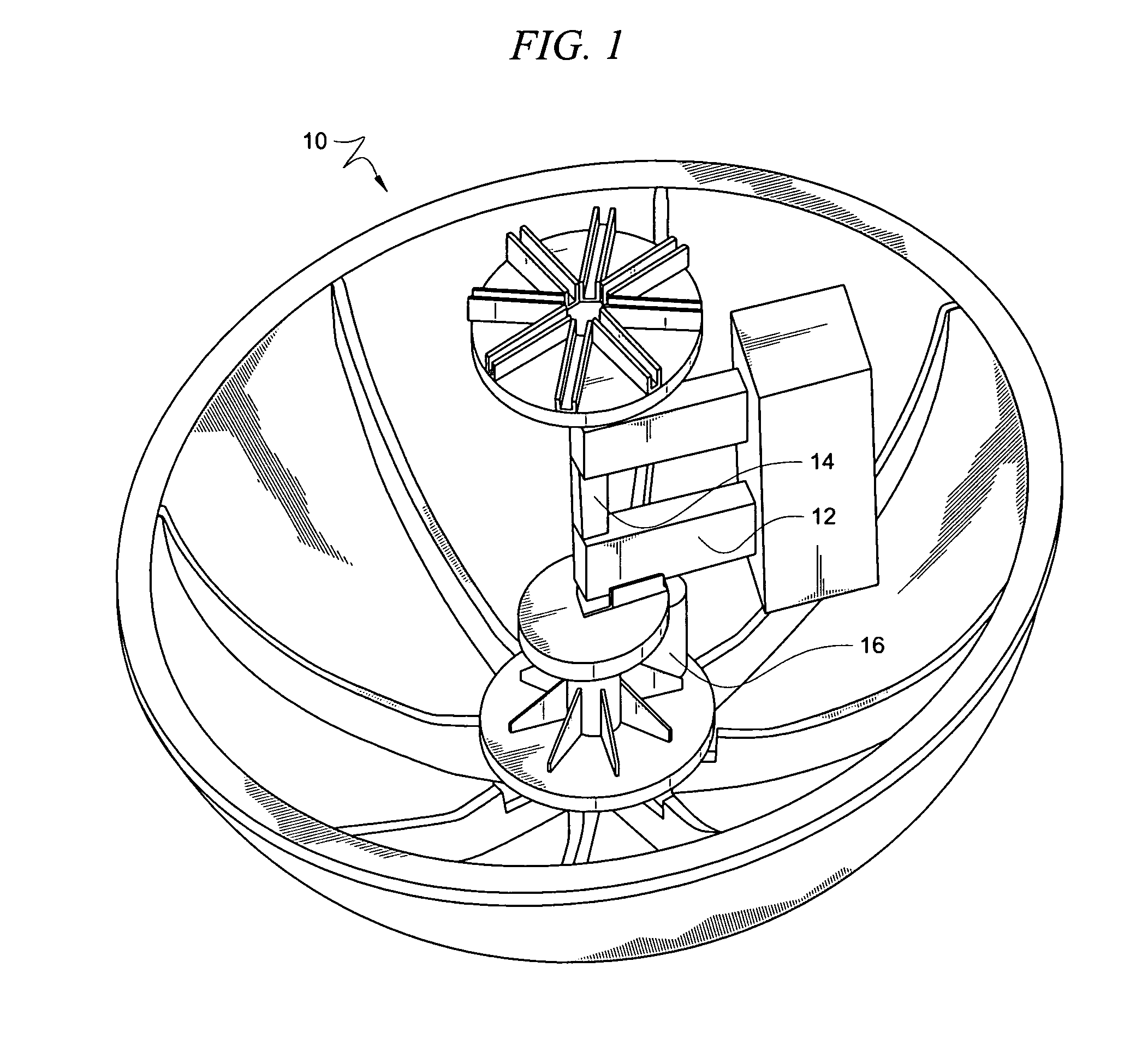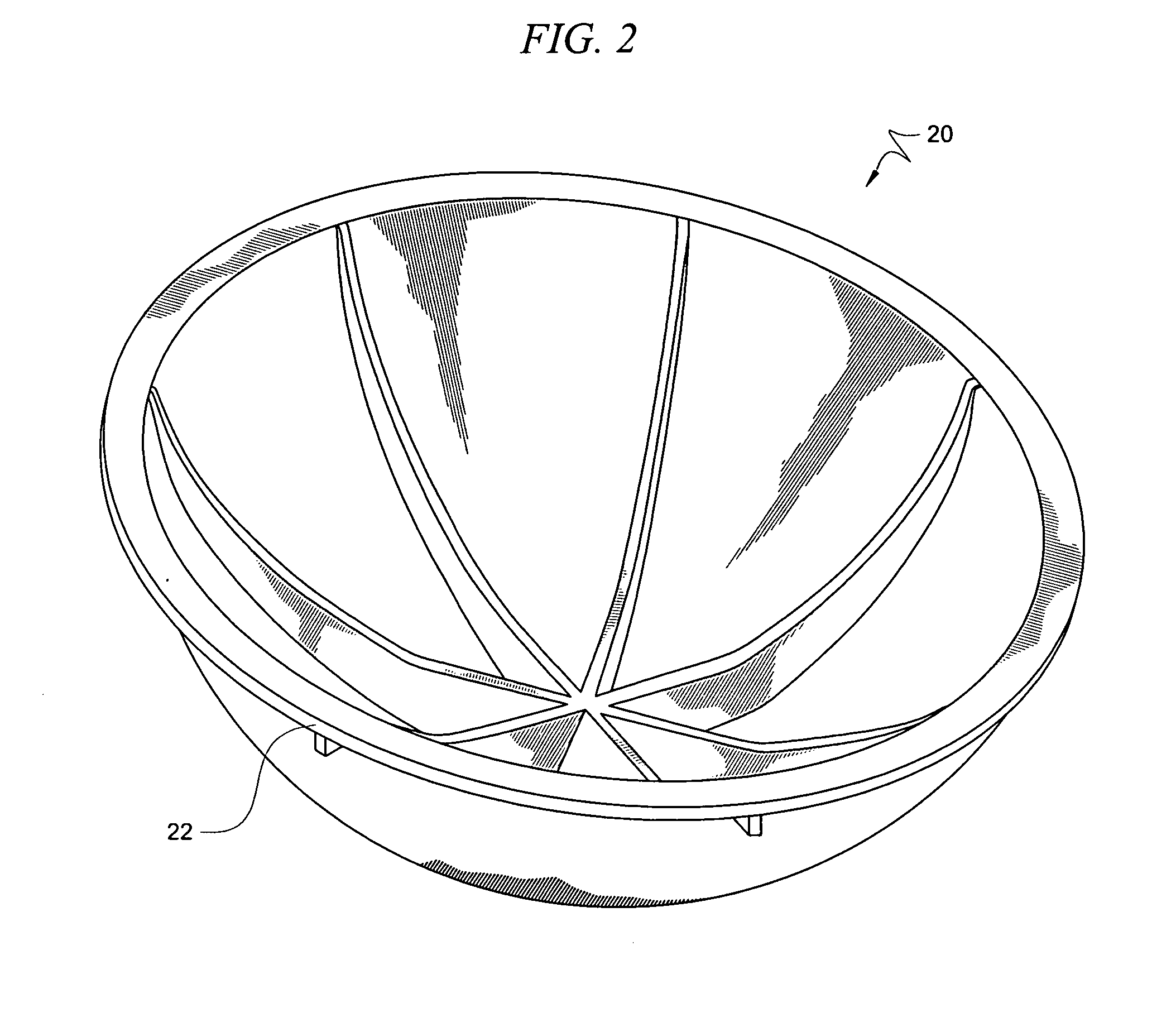Method and apparatus for converting ocean wave energy into electricity
a technology of ocean wave energy and equipment, applied in the direction of mechanical equipment, electric generator control, machines/engines, etc., can solve the problems of inability to maintain and use inventions that are unreasonably expensive to maintain and inefficient, and the outer planetary gear is unlikely to maintain a perfectly circular shap
- Summary
- Abstract
- Description
- Claims
- Application Information
AI Technical Summary
Problems solved by technology
Method used
Image
Examples
Embodiment Construction
[0018]Apparatus 10 is a buoy that houses components which facilitate harnessing the kinetic energy of ocean waves and converting that energy into electrical energy. As will be further discussed, components within buoy 10 comprise a pendulum 12 rotating about a vertically-oriented shaft 14 within buoy 10, as buoy 10 tilts under the influence of wave motion. Rotating pendulum 12 drives a centrally located generator mechanism 16. The generated energy can then be stored at buoy 10 or transferred by conductors 60 to a remote storage facility 62. Also, embodiments are envisioned where an array of buoys 10 are employed through a cable grid 50.
[0019]As seen in FIG. 2, buoy 10 is characterized by a bottom shell component 20 and a corresponding top shell component (not shown). Bottom shell component 20 and the top shell component are preferably hemispherical in shape and are of identical dimension, where each may be combined with the other to form an enclosure having an oblate spherical shape...
PUM
 Login to View More
Login to View More Abstract
Description
Claims
Application Information
 Login to View More
Login to View More - R&D
- Intellectual Property
- Life Sciences
- Materials
- Tech Scout
- Unparalleled Data Quality
- Higher Quality Content
- 60% Fewer Hallucinations
Browse by: Latest US Patents, China's latest patents, Technical Efficacy Thesaurus, Application Domain, Technology Topic, Popular Technical Reports.
© 2025 PatSnap. All rights reserved.Legal|Privacy policy|Modern Slavery Act Transparency Statement|Sitemap|About US| Contact US: help@patsnap.com



